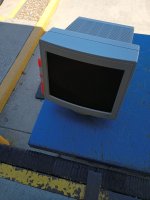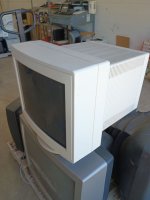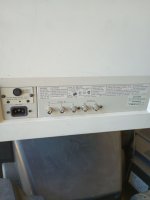appleIImidi
Member
- Delivery Options
- Local Pickup Only
Need to gauge interest, I'm trying to decide whether to take these or not. Potentially going to pick up 2 of these behemoths. 85lbs each so shipping isn't really something I want to mess with. 5 BNC connectors on the back. I bought a VGA to BNC adapter so I will test them and update afterwards. Not really sure what the value is but I'm more into trades anyway. Mostly Apple II or PC stuff PIII and older, software, books, etc. I'm in St Louis, MO.





